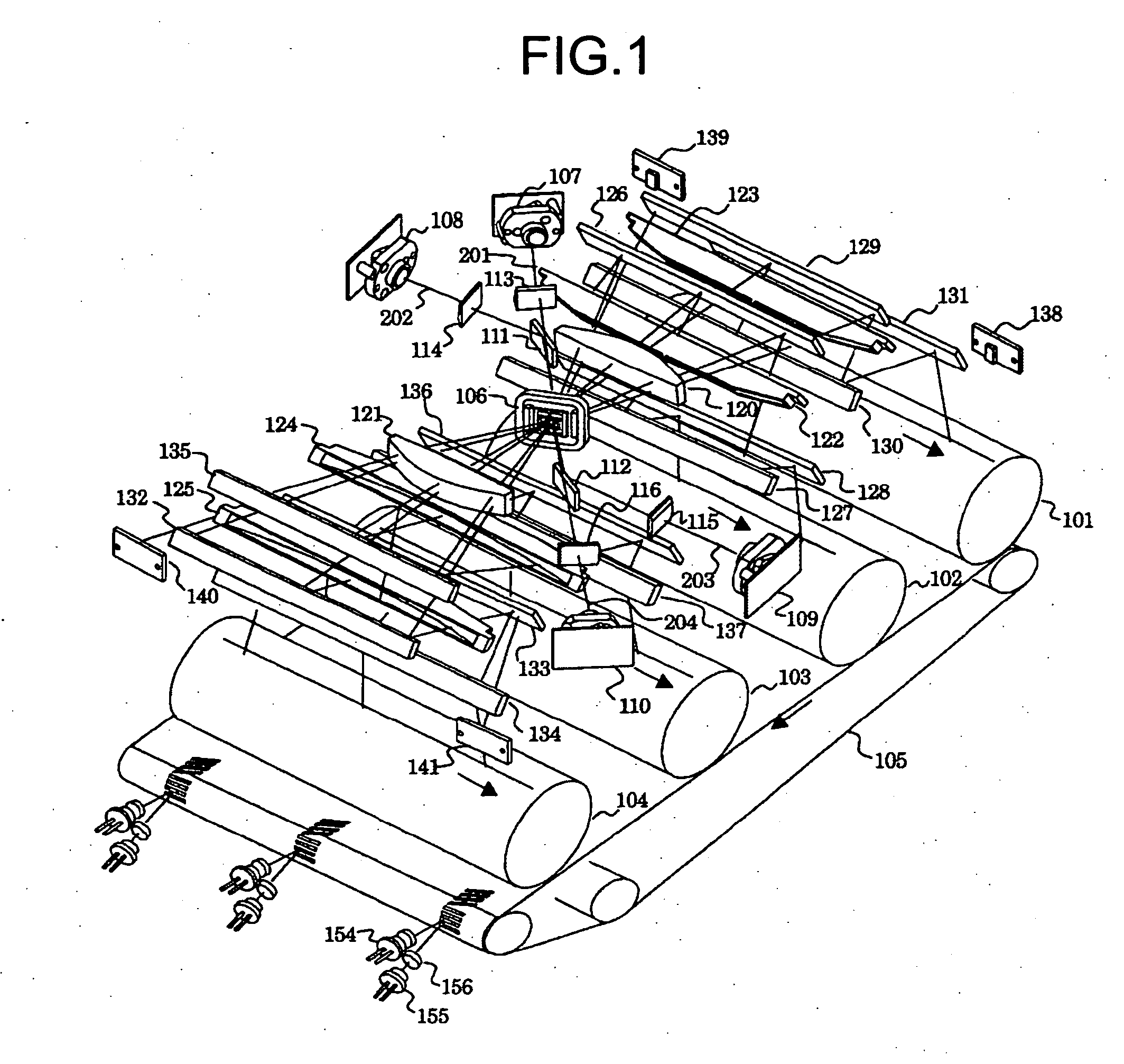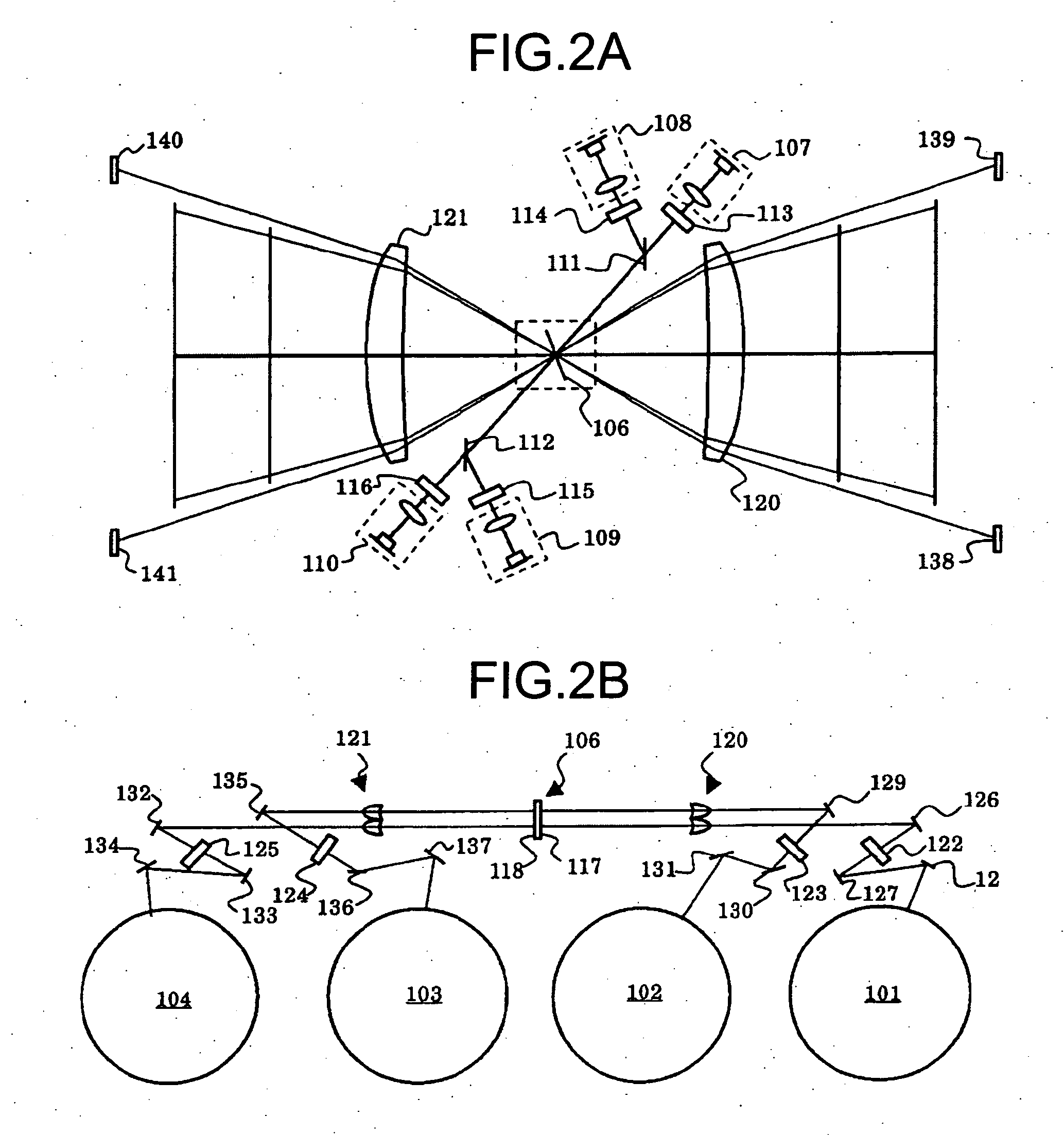Optical scanning device and image forming apparatus
a scanning device and image forming technology, applied in the direction of optics, electrographic process devices, instruments, etc., can solve the problems of noise generation, wear-out of bearings, and generation of hea
- Summary
- Abstract
- Description
- Claims
- Application Information
AI Technical Summary
Benefits of technology
Problems solved by technology
Method used
Image
Examples
first embodiment
[0046]FIG. 1 is a perspective for explaining a first embodiment according to the present invention.
[0047] Reference numerals 101 through 104 in the drawing designate photosensitive drums that are to be scanned, 105 designates a transfer belt, 106 designates a vibration mirror module (hereinafter, “vibration mirror”), 107 through 110 designate light source units, 111 and 112 designate incident mirrors, and 113 through 116 designate cylinder lenses. Other reference numerals will be referred to in the explanation where they appear.
[0048] The optical scanning device shown in FIG. 1 corresponds to a tandem image forming apparatus having four stations. The stations are divided into two two-station groups. Beams are projected on a single-body vibration mirror in which the reflective surfaces are arranged back-to-back in opposite directions, and deflected for scanning. The single-body vibration mirror may have a structure in which reflective surfaces are provided on both sides of a single ...
PUM
 Login to View More
Login to View More Abstract
Description
Claims
Application Information
 Login to View More
Login to View More - R&D
- Intellectual Property
- Life Sciences
- Materials
- Tech Scout
- Unparalleled Data Quality
- Higher Quality Content
- 60% Fewer Hallucinations
Browse by: Latest US Patents, China's latest patents, Technical Efficacy Thesaurus, Application Domain, Technology Topic, Popular Technical Reports.
© 2025 PatSnap. All rights reserved.Legal|Privacy policy|Modern Slavery Act Transparency Statement|Sitemap|About US| Contact US: help@patsnap.com



